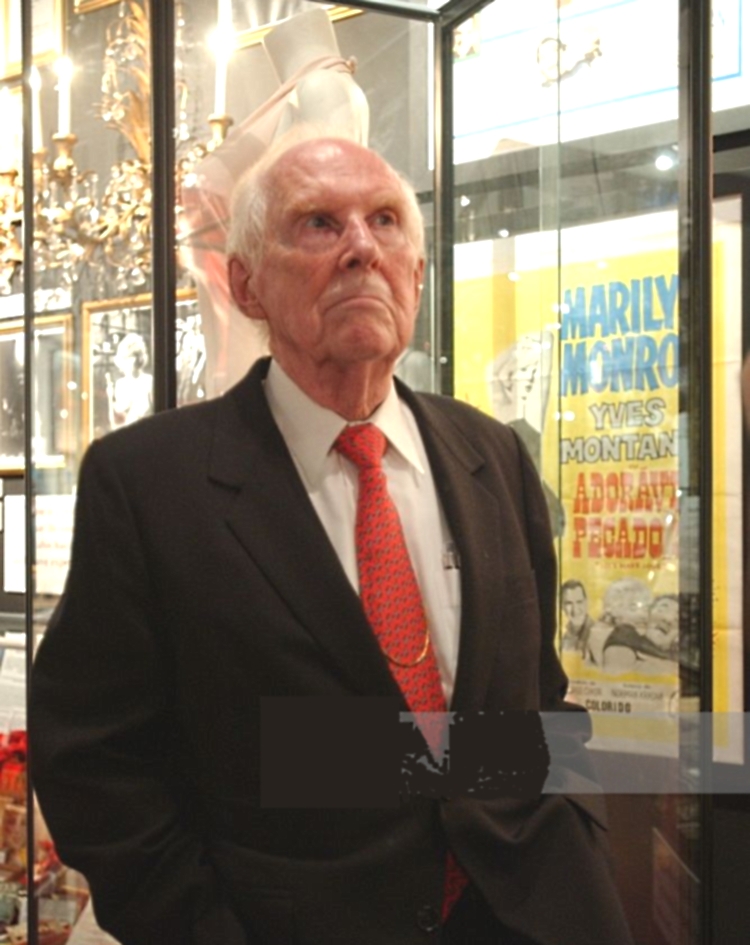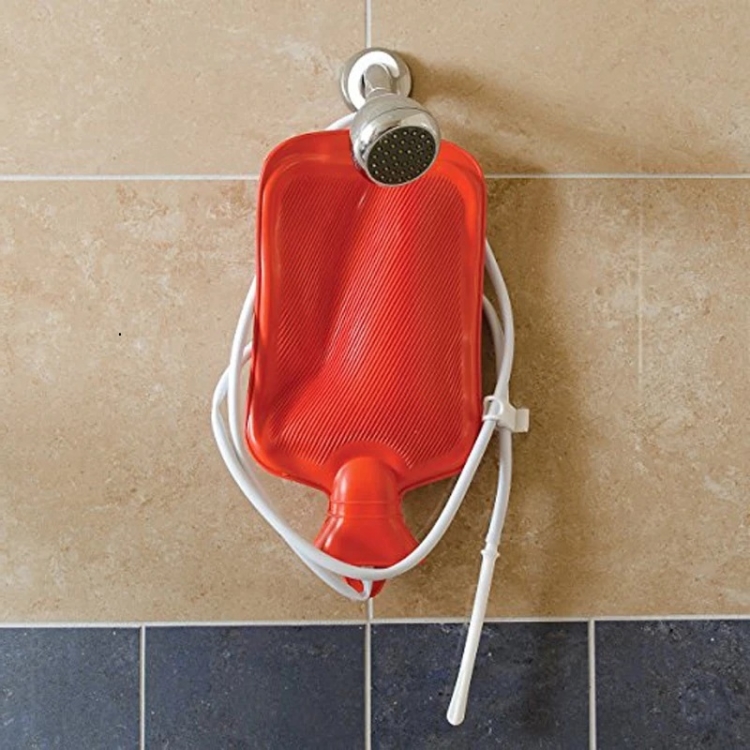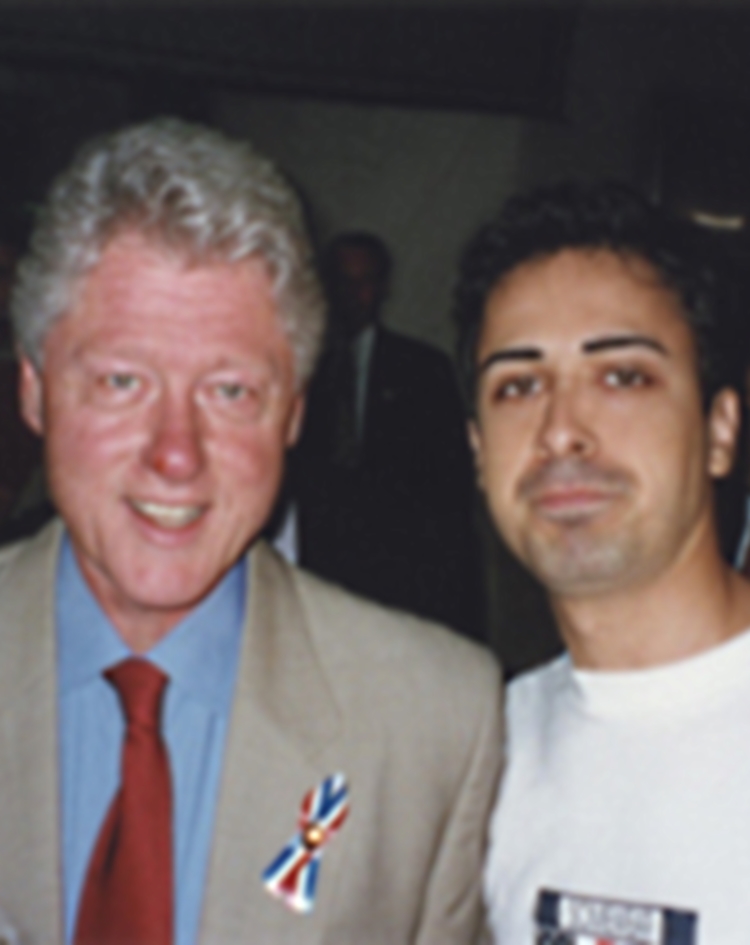An Intrusion and the Next Door Neighbor
When Robert Kennedy barged into Marilyn’s hacienda, directly into the living room, and ordered Mrs. Murray and Norman Jefferies to leave, Marilyn was putatively in her nearby bedroom involved with a telephone conversation. It is odd that she did not hear Kennedy’s order. A few minutes later, she heard the disturbance in the detached guest cottage, a considerable distance removed from her bedroom. Robert Kennedy must have whispered his get lost edict to Mrs. Murray and son-in-law. Nonetheless, Marilyn’s housekeeper and her handyman departed as ordered; but where they actually went and how they occupied themselves, what should have been a relatively easy fact to establish, remained shrouded in mystery―that is, until Jay Margolis and Richard Buskin published their 2014 case closing volume.
The evening visit by Mrs. Murray and Norman Jefferies to a mysterious next door neighbor intersects with the tale of a bridge party that allegedly occurred on that Saturday in 1962, a tale that began, as many tales have over the years following Marilyn’s death, with the dubious raconteur of Marilyn’s life and her curious death, Robert F. Slatzer.
In his 1974 publication, the fabulist wrote: Several women visiting one of Marilyn’s neighbors on Saturday after-noon, August 4, 1962, tell a story that seems to support my findings―and Mailer’s, too (Slatzer 20). Slatzer’s reference to Norman Mailer’s findings, of course, meant the opinion Mailer expressed in his 1973 factoidal Marilyn biography: Mailer placed Robert Kennedy in Los Angeles on August the 4th and, more than likely he surmised, inside Marilyn’s hacienda, possibly even inside her bed.
Once again, allow me to digress momentarily. As I have already noted herein, Mailer, as he eventually admitted, did not actually research Marilyn’s death or Robert Kennedy’s itinerary that August weekend; and although Slatzer never made an admission like the Pulitzer Prize winning author, Marilyn’s discredited weekend husband never researched Marilyn’s death or Kennedy’s actual location that weekend, either, conclusively proven by Will Fowler’s collected Papers. Both Mailer and Slatzer relied on Frank Capell’s discredited 1964 political diatribe and anti-Kennedy pamphlet, which placed Robert Kennedy in Marilyn’s house that August Saturday. Slatzer even had the audacity to invoke Frank Capell’s name, through the testimony of Sgt Jack Clemmons, and call the Kennedy hating libelist an investigative reporter. Slatzer declared:
According to Sergeant Jack Clemmons, investigative reporter Frank Capell also placed Bobby Kennedy in the Kennedy family suite at the plush Beverly Hilton Hotel on Saturday. “Bobby Kennedy had a room in his name at the Beverly Hilton Hotel. Frank Capell, who was a heck of an investigator, went over and checked the register. He got somebody to let him look at the register” (Slatzer Files 176).
The preceding testimony is certainly very reminiscent of Officer Lynn Franklin’s statements. Franklin also alleged that he convinced Charlie Hugo, Officer Franklin’s pal and the Beverly Hilton’s security chief, to allow an inspection of the guest registration book. Allegedly, Hugo even provided a copy of the page that displayed Kennedy’s signature. Unfortunately, or predictably, the copy of that registration page disappeared as I noted in Section 7.
Still, Slatzer never allowed the absence of research or facts to encumber his yarns. According to him, the women had convened for their weekly, Saturday card party, when miraculously:
Looking out the window, they observed a handsome man with a beaked nose, accompanied by another man, a stranger to all but their hostess. They recognized the first man because he was Robert F. Kennedy!
The reason the lady of the house recognized the man with Kennedy was that she had seen him visit Marilyn’s house on numerous other occasions. He was, in fact, a regular visitor. The woman didn’t know what his exact calling was, but she surmised that he was a medical man because he always carried a small black valise, the kind used by doctors on house calls (Slatzer 20-21).
Oddly enough, Slatzer never identified the second man that the lady of the house recognized; and we are left to ponder why? Did he simply want to infer that the man with Robert Kennedy was Dr. Ralph Greenson toting that small black valise?
Over the years, following the path plotted by Mailer and Slatzer, many writers have used Slatzer’s bridge party story as definite proof that Robert Kennedy visited Marilyn on August the 4th; however, as you have probably already concluded, with each retelling, the story became more and more malleable as various writers began to shape and hammer it to fit their particular murder orthodoxy. What started as an early afternoon visit by Robert Kennedy and an unknown second man became a mid to late afternoon visit by Robert Kennedy and Peter Lawford, as asserted by Donald Wolfe, and then became a twilight visit by Robert Kennedy and a doctor and finally became an evening visit by Robert Kennedy and two LAPD Gangster Squad thugs, as asserted by Sgt Jack Clemmons. In some accounts, Robert Kennedy arrived by car; but in other accounts, he was spotted walking nonchalantly on Fifth Helena toward Marilyn’s walled hacienda. While the testimony regarding Robert Kennedy’s arrival has been attributed to primarily one woman, the testimony has been vaguely attributed to the entire group of women playing bridge that Saturday.
While I included Robert Slatzer’s original 1974 account above; the following are some samples of how the changing story has been reported over time:
According to Anthony Summers, 1985 (2000):
In 1982 the District Attorney gave cursory attention to a report that Kennedy was seen arriving at Marilyn’s home during the afternoon. I tracked that story to its source, a woman called Betty Pollard. She said her mother was playing bridge at a neighbor’s home that day, when her hostess drew the player’s attention to a car parking outside. Kennedy, immediately recognizable, emerged from the car and went into Marilyn’s house. The hostess mentioned that she had seen him visiting on previous occasions (Summers 616).
According to Robert Slatzer, 1992:
In addition, several of Marilyn’s neighbors claim they saw Bobby Kennedy entering Marilyn’s house that day.
Several months after Marilyn’s death, Sergeant Jack Clemmons began his own investigation of that Saturday’s event. He soon discovered a group of women who regularly gathered to play cards on Fifth Helena Drive. They told Clemmons that “They saw Kennedy at about dusk. They were sitting playing bridge and Bobby Kennedy walked right by their window on his way to Marilyn’s house.”
The women told Clemmons that the attorney general had two other men with him. They also set the time at 7:45 PM, shortly after the sun went down.
Asked if they were certain it was Bobby Kennedy, the hostess replied: “I’ve seen Bobby Kennedy go into that house a dozen times and that definitely was him. I don’t know who the other two men were, but Bobby Kennedy went into that house.”
Interviewed recently, the daughter of one of those women, Betty Pollard, supported her mother’s story (Slatzer Files 177).
According to Donald Wolfe, 1998 (2012):
Shortly after dusk, three men walked down Fifth Helena Drive. One was carrying a small black satchel similar to a medical bag. Elizabeth Pollard, a neighbor of Marilyn’s, often asked a group of friends over on Saturday evening to play cards. Several months after Marilyn’s death, they told Police Sergeant Jack Clemmons that “they saw Kennedy go into Marilyn’s house just after dusk. They were sitting playing bridge and Bobby Kennedy walked right by the window on his way to Marilyn’s house.” The women told Clemmons that the attorney general had two other men with him (Wolfe 521).
According to David Marshall and the DD Group, 2005:
The story of Elizabeth Pollard, the weekend card game and the spotting of RFK on 5th Helena may have originated with Robert Slatzer’s The Curious Death of Marilyn Monroe, but it is a story that has been picked up and researched and elaborated upon by more than one of the many authors describing Marilyn’s last day.
The basics of the story have a group of neighborhood women gathered at one of the homes facing 5th Helena for a Saturday afternoon game of cards. During the game, Mrs. Pollard looked up to see Robert Kennedy passing by a window as he walked up 5th Helena. Mrs. Pollard called this to the attention of the other players who all gathered at the window to see RFK open and enter the gates to Marilyn’s property (Marshall KE:Timeline).
According to Keith Badman, 2010:
Then at approximately 4.15pm, […] two further individuals were seen entering the actress’s home. According to Marilyn’s card-playing neighbors, and chiefly as recalled by Mrs. Elizabeth Pollard, one matched the description of Peter Lawford, the other that of Bobby Kennedy (Badman KE:9).
According to Peter Wright, 2012:
Mrs. Elizabeth Pollard, Marilyn’s neighbor, had no involvement with Marilyn, and no reason to lie. She claimed to have seen RFK returning to the house accompanied by a man carrying a doctor’s bag. She recognized Bobby, but not the other man, although she had seen him arrive at Marilyn’s house countless times before. He was a regular visitor. He was, of course, Peter Lawford (Wright KE:34).
Marilyn’s legitimate biographers, along with more than a few conspiracist writers, did not even mention the bridge party and thusly omitted any testimony pertaining thereto; but apparently, all the preceding authors, including the progenitor of the story, Robert F, got it all wrong; but Jay Margolis and Richard Buskin set the record straight in 2014.
Margolis and Buskin evidently learned the following from Joan Greenson, Dr. Greenson’s daughter: Marilyn found out that the neighbor who you could see from her property was a professor at the university (Margolis/Buskin KE:3). From the preceding gossamer piece of testimony, Margolis and Buskin determined that the professor mentioned by Joan was in fact, Ralph Mosser Barnes, an engineering professor employed by UCLA; his wife was Mary W. Goodykoontz Barnes, the woman who hosted the bridge party. Elizabeth Pollard did not host that party, according to Margolis and Buskin: she was merely a guest at the house of Mrs. Barnes, who lived at 12304 Fifth Helena, the property to the southeast of Marilyn’s hacienda.
Regarding the neighbor that Mrs. Murray and son-in-law visited that night, Donald Wolfe offered a different scenario than Margolis and Buskin, who simply noted that Wolfe and his source, Sgt Jack Clemmons, committed a major error; but Wolfe also relied on the testimony of Norman Jefferies. According to Jefferies according to Wolfe, Robert Kennedy and his pals entered Marilyn’s hacienda between 9:30 PM and 10:00 PM and ordered them to disappear. We were told to leave. I mean they made it clear we were to be gone. But this time Eunice and I didn’t leave the neighborhood. We went to a neighbor’s house. […] We waited at the neighbor’s house for them to leave, a wait and a vigil that ended at 10:30 PM. Wolfe did not actually know where the tossed-out duo landed that night because Jefferies did not know; but Wolfe knew they did not visit Mr. and Mrs. Landau, who insisted they were out that evening until at least eleven. Then Wolfe surmised that Jefferies may have been referring to the nearby home of Hanna Fenichel on Third Helena Drive (Wolfe 522), two streets to the southeast of Fifth Helena. The preceding Wolfe scenario has a plethora of problems; but I will not get tangled in that web.
What to make of all the preceding confusion? Is it necessary to attempt a sorting, to attempt an organization? Probably not. But before proceeding, I would be remiss if I did not mention the pertinent commentary about the siting of Robert Kennedy that Saturday contained in the LADA’s 1982 summary report along with the pertinent commentary contained in Sarah Churchwell’s publication, The Many Lives of Marilyn Monroe. Quoting from the 1982 summary report:
Mr. Robert Slatzer states that he interviewed a Miss Elizabeth Pollard who related to him that Robert Kennedy and an unidentified man, believed to be a physician, were seen at the Monroe residence on August 4, 1962. The author provided our investigators with a transcript of the statement made by the purported witness. The witness-informant actually said that her mother told her that Robert Kennedy had been seen by someone while the witness’s mother was attending a card party at a residence near the Monroe residence. The witness could not recall whether her mother had said she actually saw Kennedy or whether she said that someone else had told her that he had seen Kennedy. In the transcript provided by the author there is no mention of anyone accompanying Kennedy on the purported visit (SR 24:emphasis mine).
The Los Angeles County District Attorney’s investigators actually interviewed Betty Pollard, Elizabeth’s daughter. The investigators could not interview Elizabeth Pollard: prior to 1982, she relocated into eternity.
Sarah Churchwell viewed the entire Robert-Kennedy-arrived-during-a-bridge-party scenario with what struck me as slightly humorous skepticism. Sarah noted, while Wolfe could determine where Mrs. Murray and Jefferies did not go, he could only speculate about where they possibly went, to the home of Miss Fenichel. Or perhaps not. Sarah then appropriately added: At any rate, Wolfe doesn’t substantiate the speculation (Churchwell 306). Wolfe did not substantiate or corroborate many of his speculations; and based on the preceding selection from the 1982 Summary Report, Robert Slatzer actually based his card party yarn on unsubstantiated and secondhand, hearsay testimony―par for that golf course.
So, after Mrs. Barnes hosted the bridge party during that afternoon, she received a visit from Mrs. Murray and Norman Jefferies that night, even though Slatzer, Clemmons and finally Donald Wolfe clearly indicated that the bevy of neighborhood ladies were still constructing their bridge when Kennedy arrived. Therefore, Mrs. Murray and Norman Jefferies must have visited Mrs. Barnes and her guests while they were actually playing bridge.
If, as asserted by Wolfe, Mrs. Barnes testified to Sgt Clemmons, why then, did he fail to identify her, mention her name? Well, according to Margolis and Buskin: At the time, Mrs. Barnes refused to identify herself to Sgt. Clemmons, and because she passed away on March 12, 1964, her eyewitness account seemingly disappeared into the wind―until now (Margolis and Buskin KE:1). Odd, is it not, that Mrs. Barnes testified for Sgt Clemmons, meaning that her eyewitness account did not float away into the wind; but then, we are left to wonder why she refused to identify herself?
Margolis and Buskin based their identification of Mrs. Barnes entirely on one sentence spoken by Joan Greenson; and they could not substantiate their conclusion or corroborate the testimony from Mrs. Barnes, her engineering husband or Sgt Jack Clemmons. All were deceased, as was Norman Jefferies, who never offered any detailed information about the mysterious visit with Marilyn’s next door neighbor. Once again, we are left to wonder why; and even though Sgt Clemmons testified for Donald Wolfe, the sergeant never mentioned if Mrs. Barnes talked with her guests that evening. During the hour the dispatched pair allegedly waited in Mrs. Barnes’ home, did they share anything about the drama unfolding at 12305 Fifth Helena? During their wait, did they share tea and pikelets with the bridge-playing ladies and discuss Marilyn’s predicament? Did the card playing ladies share stories about their Marilyn Monroe encounters or some mysterious occurrences at 12305 Fifth Helena Drive? Most certainly, the answers to those pertinent questions are not forthcoming.
According to Margolis and Buskin, the barking of Marilyn’s small Maltese terrier, Maf, signified to Mrs. Murray and Norman Jefferies that Robert Kennedy and his compatriots had vacated Marilyn’s hacienda. Would Mrs. Murray and Jefferies have heard the yapping of such a small dog if they had relocated inside Mrs. Barnes’ home? Considering that Marilyn’s guest cottage was at least one-hundred and fifty feet away from 12304 Fifth Helena, I have my doubts. Most certainly, if the transplanted pair visited the house on Third Helena, as speculated by Donald Wolfe, Maf’s tiny vocalizations would not have reached them.
Finally, one extremely important point must be mentioned. Fifth Helena Drive and its cul-de-sac does not even reach 12304 Fifth Helena, much less extend beyond it. Therefore, any person located in that house could not have observed Robert Kennedy passing a window while he nonchalantly strolled up Fifth Helena. Such an advance could only have been observed from the one story house located west of 12304, the house that fronts on and must have a South Carmelina Drive address; and any person who observed a passing Robert Kennedy from the only floor of that home could not have also observed him entering Marilyn’s front door, not during the afternoon, not during twilight, not at dusk and most certainly not after the descent of darkness. Likewise, any person located on the ground floor of 12304 Fifth Helena Drive could not have observed Marilyn’s property or the front door of her hacienda: that view would have been obscured by the tall masonry wall and the tall, dense foliage that girdled Marilyn’s property . The view of a person located on the second floor of 12304 Fifth Helena would also have been similarly obscured by dense foliage; and, needless to say, Marilyn’s hacienda could not be seen at all from Third Helena Drive.


